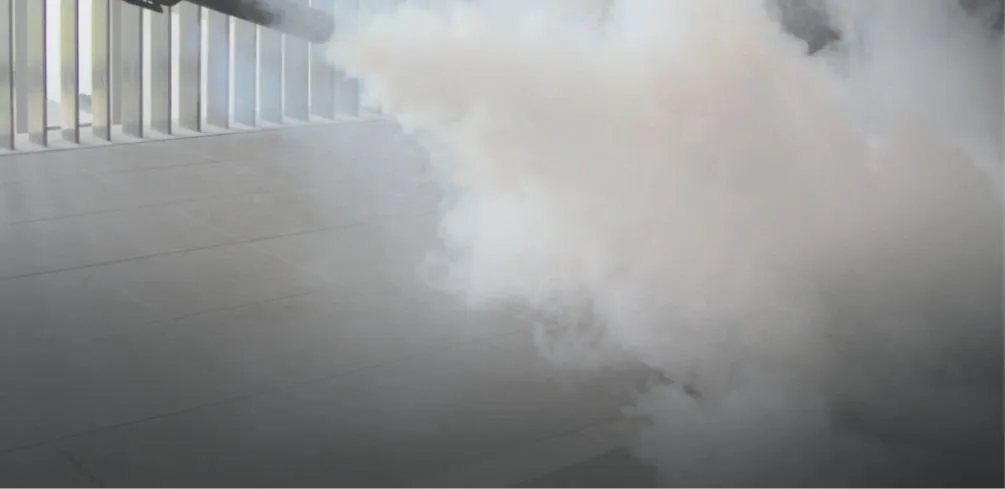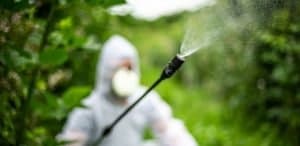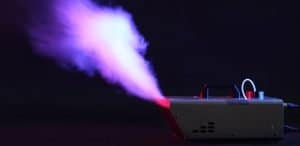Do you know the difference between a dry fogger and a wet fogger? If not, don’t worry. You’re not alone.
Many people don’t know the difference, but it’s an important distinction to make when choosing the right fogging machine for your needs. Knowing the difference will help you make a more informed decision and ultimately choose the best machine for your particular situation.
The main difference between a dry fogger and a wet fogger is the diameter of the droplets they emit. A dry fogger emits droplets that are between 10 and 15 microns in diameter. On the other hand, a wet fogger emits droplets between 20 and 30 microns in diameter.
In this blog post, I will discuss the differences between these two types of foggers and help you decide which one is best for you.
What is a Dry Fogger?
A dry fogger is a machine that emits a fine mist of droplets that are between 10 and 15 inches in diameter. This mist is created by passing a compressed gas through a small nozzle at high pressure.
The high-pressure gas causes the liquid ejected from the nozzle in a fine spray.
Most thermal foggers are dry foggers because their mist typically consists of droplets with a diameter of around 10 microns. These foggers are perfect when you need to spread the fog across a broad region.
This is because the wind and air currents will allow the smaller particles to spread widely and move pretty far.
The droplets emitted by a dry fogger are so small that they remain suspended in the air for long periods of time. This makes them ideal for fogging large areas, such as warehouses and factories.
The drawback to this is that you might not get full coverage of the area you intended to treat. This suggests that it could be preferable to fog the region at least twice for more thorough coverage.
What is a Wet Fogger?
A wet fogger is a machine that emits a mist of droplets that are between 20 and 30 inches in diameter. Unlike a dry fogger, a wet fogger uses a pump to draw the liquid from a reservoir and then forces it through a small nozzle under high pressure.
Most cold or ULV foggers can spread dry and wet fog. With these nozzles, you may control the spray volume and droplet size between 5 and 50 microns.
You’ll obtain a dry fog if you keep the droplets small.
You can create a wet fog by adjusting the machine to produce a mist with droplets 20 microns or larger. These larger droplets are better suited for uses like cleaning, controlling mold, and applying insecticide to a particular area.
These bigger droplets indicate that the fog will extensively coat selected surfaces with the selected solution and wet them.
The high-pressure pump allows the wet fogger to emit larger droplets than a dry fogger. However, these droplets fall to the ground more quickly, making them better suited for fogging smaller areas, such as homes and offices.
What is the Difference Between a Dry Fogger and a Wet Fogger?
There are a number of differences between a dry fogger and a wet fogger. These include:
Droplets Diameter
As I said before, the main difference between a dry fogger and a wet fogger is the diameter of the droplets they emit. A dry fogger emits droplets that are between 10 and 15 microns in diameter.
On the other hand, a wet fogger emits droplets between 20 and 30 microns in diameter.
So, what does this mean for you? Well, the smaller the droplet, the longer it will stay airborne.
This is important to consider because you want the fog to reach all corners of the room and get into all of the nooks and crannies. The larger droplets emitted by a wet fogger will fall to the ground more quickly, making them less effective at reaching all areas of the room.
Amount of Liquid
Another consideration is the amount of liquid you need to use. A dry fogger uses less liquid than a wet fogger because the smaller droplets evaporate more quickly.
This can be important to consider if you are on a budget or need to fog a large area.
What are You Fogging?
The type of liquid you are using will also play a role in deciding which machine is right for you. A dry fogger can use both water- and oil-based liquids, while a wet fogger can only use water-based liquids.
This means that if you are fogging an area that has a lot of dust, you will want to use an oil-based liquid in a dry fogger.
How Much Area Do You Need to Fog?
The size of the area you need to fog is also something to consider when making your decision. A dry fogger can typically cover a larger area than a wet fogger because it uses less liquid.
This is because the smaller particles will be able to diffuse widely in the air and cover a larger area.
How to Choose the Right Fogger for You
Now that you know the difference between a dry fogger and a wet fogger, you can decide which one is right for your needs. A dry fogger will be your best bet if you need to fog a large area, such as a warehouse or factory.
A wet fogger will be more effective if you need to Fog a smaller area, such as a home or office.
What is the Difference Between a Dry Fogger and a Wet Fogger? | FAQs
Final thoughts
The main difference between a dry fogger and a wet fogger is the diameter of the droplets they emit. A dry fogger emits droplets that are between 15 and 30 microns in diameter, while a wet fogger emits droplets that are between 20 and 50 microns in diameter.
If you need to Fog a large area, such as a warehouse or factory, a dry fogger will be your best bet. If you need to Fog a smaller area, such as a home or office, a wet fogger will be more effective.
I hope this article has helped you understand the difference between these two types of foggers and how to choose the right one for your needs.
Please be careful and use at your own risk
None of the authors, contributors, administrators, or anyone else connected with Wild Fog, in any way whatsoever, can be responsible for your use of the information contained in or linked from these web pages.










